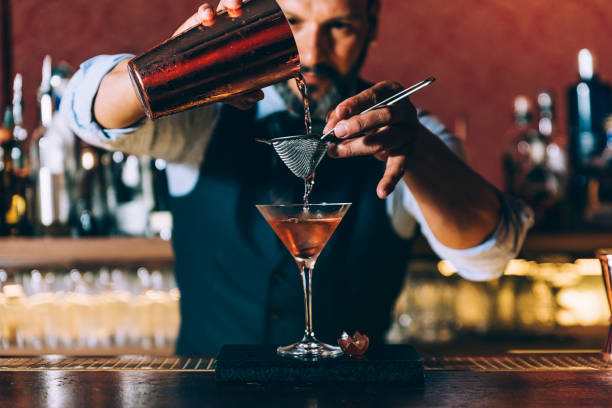Since the early aughts, when bars like Milk & Honey, Pegu Club and Angel’s Share helped craft cocktails to become a global phenomenon, cocktail culture has evolved tremendously. Bartenders have evolved from using only fresh juices, simple syrups and back-bar ingredients to creating avant-garde techniques, in-house ferments, and other innovative ingredients.
These new techniques and ingredients are a significant step forward. Bartenders who are just starting in the industry face a problem. They don’t know how to use a centrifuge until they understand cocktail basics, including how to make classic cocktails.
Bartenders need to be familiar with the basics to create unique drinks. A bar’s consistency in drink-making is dependent on having a consistent standard for classic cocktails. It’s not a good idea to go back to a bar you loved and get a completely balanced Daiquiri. But, if the bartender doesn’t mix the drink properly or uses different ratios, it can be not very pleasant. These are the details that matter for bars ranked among the best in the world.
Each bar has a unique approach. No matter the bar’s status or location, it is important to have some training program. Bars benefit not only from consistently good cocktails created by skilled bartenders but also have the opportunity to train staff in the techniques and foundational knowledge that will make them successful at the best bars around the globe.
These are the focus areas and related exercises used by top bars worldwide to train their bartenders. You can also use them at your bar.
Teach Classic Cocktail Families, and Standardize Your Specifics
Establishing your bar’s house specifications for classic cocktails is the first step. Get some books to help you standardize your recipes.
Once bartenders have mastered the basic formulas and ratios for these cocktails (e.g., an Old Fashioned contains spirit, sugar and water; a Daiquiri has spirit, citrus and sugar), it is time to learn their variations.
For a lesson on ice and dilution, you can use classic cocktails.
Most classic cocktails only require three to four ingredients. This makes them great for teaching: It’s easier for students to see when something is off balance.
The key to balancing cocktails is not just the ingredients or their proportions. Temperature and dilution are also important factors. Typically, these two factors can be achieved by mixing a cocktail with ice.
Bartenders know the shelf life of every cocktail. This is when it’s at its peak temperature and dilution. Cocktails served on ice can dilute the cocktail over time and have volatile shelf lives.
Focus on speed, accuracy, and round-building
After bartenders have mastered classic cocktails and the specifications preferred by their bar, it is time to concentrate on efficiency. This begins with bartenders’ ability to pour drinks quickly and accurately.
Bartenders who have mastered basic pouring techniques will be able to speed up and make mistakes less often. Satan’s whiskers is a London classic bar that requires bartenders to complete timed speed and accuracy tests to understand each bartender’s skill level better. This format can create full cocktails, rather than just pouring one ingredient. This is ideal for round-building.
A bartender’s most important skill is building a round correctly. Drink orders are often received in multiples at busy bars. It is important to know how to order the right number of drinks so that the bar can maintain its standards.

